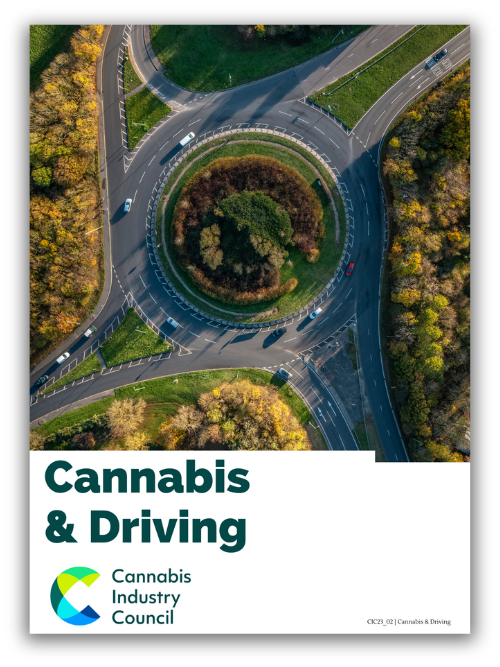Trusted guidance and resources
Cannabis & Driving
Navigating the complex intersections of medical cannabis usage and driving is a challenging task, one that raises numerous questions of legality, health, and public safety.
While medicinal cannabis has been legal in the UK since 2018, the repercussions for patients who are also drivers remain clouded in ambiguity, partially due to the inconsistent standards and regulations around the usage of Cannabis Based Products for Medicinal use in humans (CBPMs) and driving.
This positioning paper has been prepared by Frances Crewdson on behalf of the CIC Standards Group, with input from its members and lawyers with specialised subject knowledge.
Review the recommendations below, and download the document to read the details in full.
Recommendations
Standardise medical cannabis and driving guidelines to focus on impairment (Section 4 of the Road Traffic Act 1988), rather than the “illegal drugs, accidental exposure, zero tolerance” threshold limit (Section 5A of the Road Traffic Act 1988). Medical cannabis patients have a statutory medical defence to exceed the specified limit of 2 micrograms per litre in blood so long as they are not impaired and have followed the guidance of their practitioner/manufacturer (i.e: do not drive if impaired).
Responsibility: Government & Police
Continue to use the Field Impairment Test (FIT) as the method of identifying impairment until other alternatives are available. THC concentration in blood and saliva are inconsistent markers for a driver’s impairment, due to the long half-life of cannabis in the body.
Responsibility: Police
Standardise the driving warnings around impairment on medical cannabis product labelling.
Responsibility: Industry & MHRA
Review the consistency and effectiveness of communication to medical cannabis patients around their statutory rights, and put plans put in place to improve it where necessary.
Responsibility: Industry
Review the consistency and effectiveness of law enforcement training around the legalisation of medical cannabis and patients’ statutory rights and put plans in place to improve it where necessary. As an example, Seed our Future is developing basic training for police, defence solicitors and the CPS due to lack of knowledge of CBPM’s lawful status and confusion within the RTA legislation.
Responsibility: Police
Review the consistency and effectiveness of safe driving communication to CBPM prescribers and put plans in place to improve it where necessary.
Responsibility: Industry and Clinics
Contributors
With thanks to the following contributors:
- Members of the CIC Standards Working Group
- Frances Crewdson, Ananda
- Guy Coxall, Seed Our Future
- Kirsty Morrison, Cancard
- Dr Callie Seaman, Aqualabs
References
| 1. cannabishealthnews.co.uk/2023/03/30/uk-medical-cannabis-patient-numbers-surge-in-2023/ |
| 2. https://volteface.me/uk-drug-driving-arrests-all-time-high/ |
| 3. www.gov.uk/drug-driving-law |
| 4. www.gov.uk/drug-driving-law |
| 5.https://assets.publishing.service.gov.uk/government/uploads/system/uploads/attachment_data/file/861432/2-october-2019-minutes.pdf |
| 6. www.researchgate.net/publication/360005516_Medical_cannabis_and_road_safety |
| 7. Sharma P, Murthy P, Bharath MM. Chemistry, metabolism, and toxicology of cannabis: clinical implications. Iran J Psychiatry. 2012 Fall;7(4):149-56. PMID: 23408483; PMCID: PMC3570572. |
| 8. The Handbook of cannabis and regulated pathologies talks about this by Handbook of Cannabis and Related Pathologies, (2017) 1382pp. 978-0-12-800756-3 |
| 9. www.sydney.edu.au/news-opinion/news/2021/12/02/thc-blood-saliva-poor-measures-cannabis-impairmentlambert-study.html |
| 10. www.gov.uk/driving-medical-conditions |
| 11. Prohibition Partners “The UK Cannabis Report” December 2019 |

